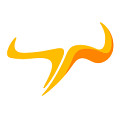Understanding the importance of the risk/reward ratio
In trading, just as in life, there is almost always a relationship between risk and reward.Generally, the higher the risk, the bigger the reward.
If you want to be a successful trader, you will have to take into account this relationship, as your goal shouldn’t be to make money whatever it takes!
You should rather make intentional trades that adhere to your risk and money management strategy according to your risk appetite, your trading capital and your goals.
To healthily increase your overall profit over time, you need to be sure you’re not risking too much of your money to reach your goals - and for that, many traders use what’s called the risk/reward ratio.
What is the risk/reward ratio?
Definition
The risk/reward is simply a way of measuring the degree of risk of your trading positions by calculating the amount of risk you’re willing to bear, compared to the potential profits you could make.
If you have a risk/reward ratio of 1:3, then you’ll risk $1 to potentially earn $3.
Formula
The formula of the risk/reward ratio is quite simple, and you can easily compute it yourself.
Risk/reward ratio = the distance between your entry point and your stop-loss order (the risk) / the distance between your entry point and your take-profit order (the reward)
Here’s another way of putting it.
Risk/reward ratio = your profit / your maximum acceptable level of risk
Easy example
Let’s say you see a buying opportunity on Netflix shares at $200/share.
You decide to open a long position with a stop-loss order at $195 and a take-profit order at $250. Your maximum potential loss is $5/share (your risk), while your maximum potential profit is $50/share (your reward).
The risk/reward ratio is, therefore, 5/50 or 1:10.
Why is the risk/reward ratio so important for traders?
Not knowing about the risk/reward ratio applied to your trading positions is dangerous, as you will never be aware of the money you risk to make profits any time you enter the markets.
The risk/reward ratio is a powerful tool to use to improve your risk management in your day-to-day trading activity and to improve the profitability of your trading strategy.
Being able to manage your risk like a professional fund manager and providing consistent risk-adjusted profits is essential to making a difference in a live trading competition like the Trading Cup.
This trading contest is all about how you make money - not how much money you can make. One of the most important aspects is, therefore, to be able to show you’ve accepted a reasonable amount of risk to get your current level of return.
What is a good risk/reward ratio?
There is no easy answer to this question, as it depends on many different factors, like your own tolerance for risk, your level of experience, your trading capital, your strategy, your goals, the level of market volatility, and the assets you’re trading, as well as the financial products you’re using.
A 1:2 risk/reward is considered by most to be the minimum risk/reward ratio to target, as it allows you to theoretically double your money. For other professionals, investors should start with a risk/reward of at least 1:3.
The most important aspect is to be aware of your risk/reward ratio and to use one that is adapted to your trading style.
It will, therefore, help you control your losses and maximize your profits. Also, always remember to focus on highly probable trades to improve your success rate and profit factor.
If you’re comfortable with the level of risk associated with your trading and you’re able to make money consistently, show the international stage what you can do with the Trading Cup live trading competition! Click here to register and open an account.

